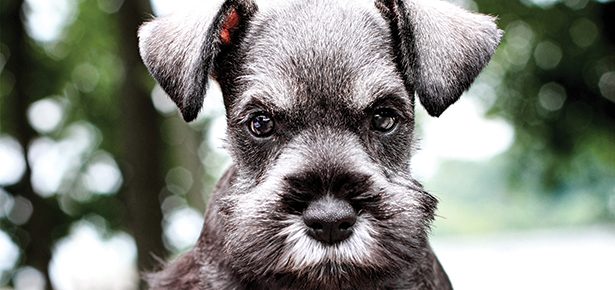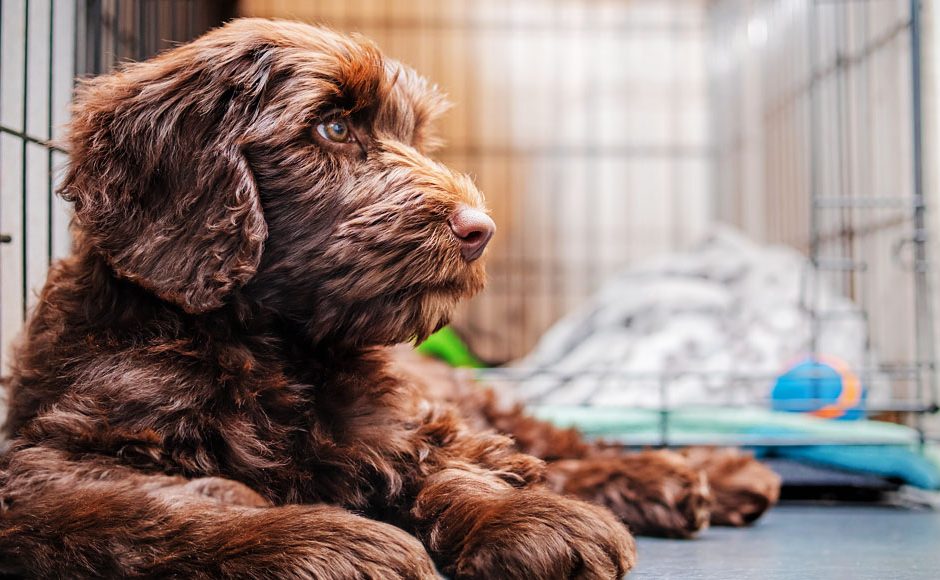

What to Do When Your Puppy Cries At Night In His Crate
It’s your first night with your new puppy and he's crying in his crate. Here’s what to do.
There are good reasons to crate puppies overnight. The most important is safety. Puppies can easily get into trouble if your house isn’t puppy-proofed. Crating helps with house training too. Puppies are unlikely to soil in their crate, and if they wake in the night the crate stops them finding somewhere in the house to toilet. A crate protects household objects from sharp puppy teeth. And crate training is useful in case of emergency and in case your dog is ever hospitalized at the vet. But the first few nights can undoubtedly be rough. Here’s what to do if your new puppy cries at night in their crate.
Puppy Crying? Where to Put Your Puppy’s Crate
The best place to put the crate overnight is in your bedroom. This makes it easier for you to hear if your puppy needs a potty break. Plus, your presence is comforting. Newly separated from their mom and littermates, puppies are not used to being alone.
“Puppies are babies; they need to feel safe,” says Suzanne Bryner of Lucky Fido Dog Training in Friday Harbor, WA. She suggests putting the crate next to the bed. Then, she says, if they wake up and you’re sure they need company not a bathroom break (e.g. they just went or have access to pee pads), “it will be easy for you to reach down and let them snuffle your fingers, talk softly and sweetly to them, and give them a little tickle.” You might be able to comfort them without letting them out of their crate.
If the bedroom isn’t where you ultimately want your puppy to sleep, you can gradually move the crate to a new location once they are house-trained. During the daytime either move the crate or have another one set up in your living area and continue with crate training sessions in which good things happen in the crate (think treats and dinner).
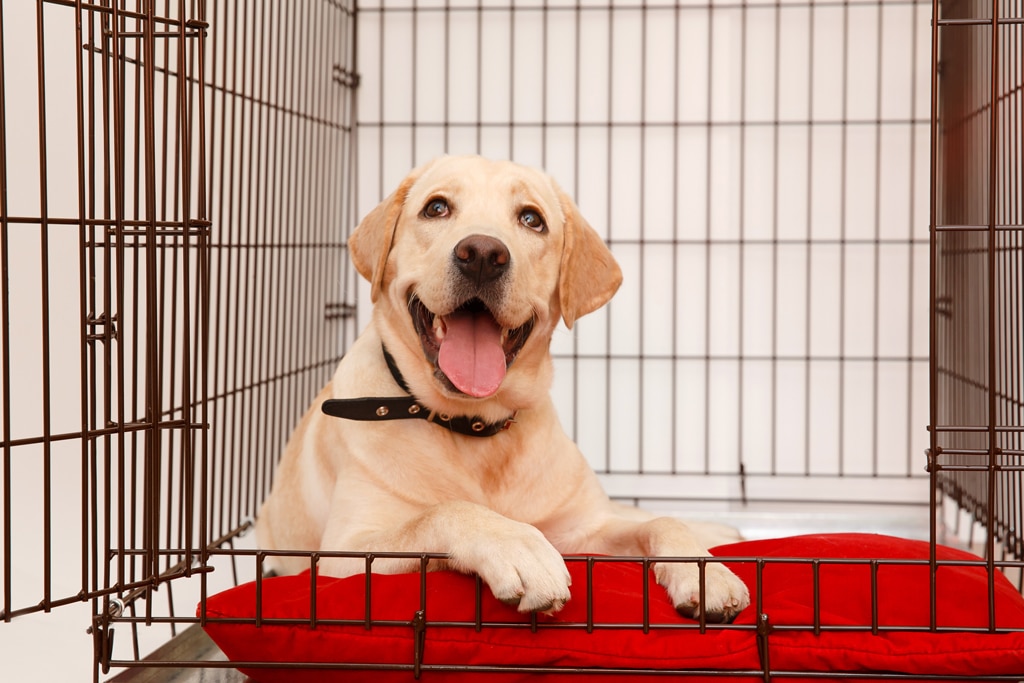
Parilov/Adobe Stock
The First Night With Your New Puppy
Coming to live in your house is a big transition and it’s normal to have some issues on the first few nights. Your puppy probably won’t have finished crate training yet (see sidebar for how to teach your puppy to love the crate), and so isn’t ready to spend the whole night in the crate. They will cry because they want company and reassurance, and/or they need a bathroom break.
“Your first night with your puppy may be the toughest,” says Kathrine Christ of Hands Full Dog Training in Wichita, Kansas. “Don’t throw in the towel; your puppy will develop a routine over the next few days and things will settle down.”
When your puppy cries, take him straight outside in case he needs to potty. Carry him to prevent accidents en route, and plan ahead by leaving shoes, your coat, and some treats (to reward toileting) in an easy-to-find spot. Then put your puppy back in the crate. Kathrine says, “Our goal should be for puppies to feel relaxed and comfortable in their crate, so if the puppy does not settle within a couple of minutes, he should be removed from the crate and re-introduced to it in a way that does not cause these unpleasant feelings.” In the long run, taking him out for now is best as you don’t want him to learn to hate the crate.
“If your puppy cries in the crate at night, your instinct will be to help him—and that’s the right thing to do.”
It may help to use a puppy pen for part of the night while you work on crate training. If your puppy is not yet old enough to “hold it” overnight (usually not until seven or eight months) and you aren’t willing or able to take him out to potty, use a large crate or puppy pen that allows room for a pee pad. (Note that if you want your dog to potty exclusively outside this may set back your housetraining efforts.)
Very young puppies (around six weeks old and under) need to toilet every half hour, but after that a rough guideline is that they can typically “hold it” for as many hours as their age in months. A 12-week-old puppy should be able to wait for about three hours but may need to eliminate well before this. For house-training purposes, take your puppy out to potty every one to two hours and reward him for toileting outside. If he is sleeping, you don’t need to disturb him. “Some books say to take the puppy out every one to two hours without this important caveat,” says Kathrine. “Some puppies can sleep for several hours at night right away!”
What to do When Puppy Cries in Their Crate at Night
If your puppy cries in the crate at night, your instinct will be to help him—and that’s the right thing to do. Although sometimes people worry that getting him out of the crate might teach him to cry, that shouldn’t deter you. In fact, you want him to know that you will help him if he’s crying. He may need you to take him outside for a potty break, or perhaps he just needs some reassurance.
“Puppies learn from consequences, and the puppy may learn that communicating with you means they will be released from the crate. But guess what? This is not a bad thing!” says Kathrine. “If one of my dogs needs to potty (or throw up!), or if they are scared of thunder, they will whine in the crate since they know I will let them out.” If you follow a gradual crate training plan that builds positive associations with the crate, she says, “you can also teach the puppy to remain quietly in the crate as long as their needs have been met, while still allowing them a voice if they are feeling upset or uncomfortable.”
Puppy Crate Training: “Err on the Side of Comfort and Kindness”
Suzanne agrees. “If a puppy who has gone through proper crate training, loves their crate, and doesn’t have a problem being crated is crying, then I would be concerned about why. I think it is really important to say here that with puppies we do best to err on the side of comfort and kindness. Comforting your puppy is never the wrong thing to do!”
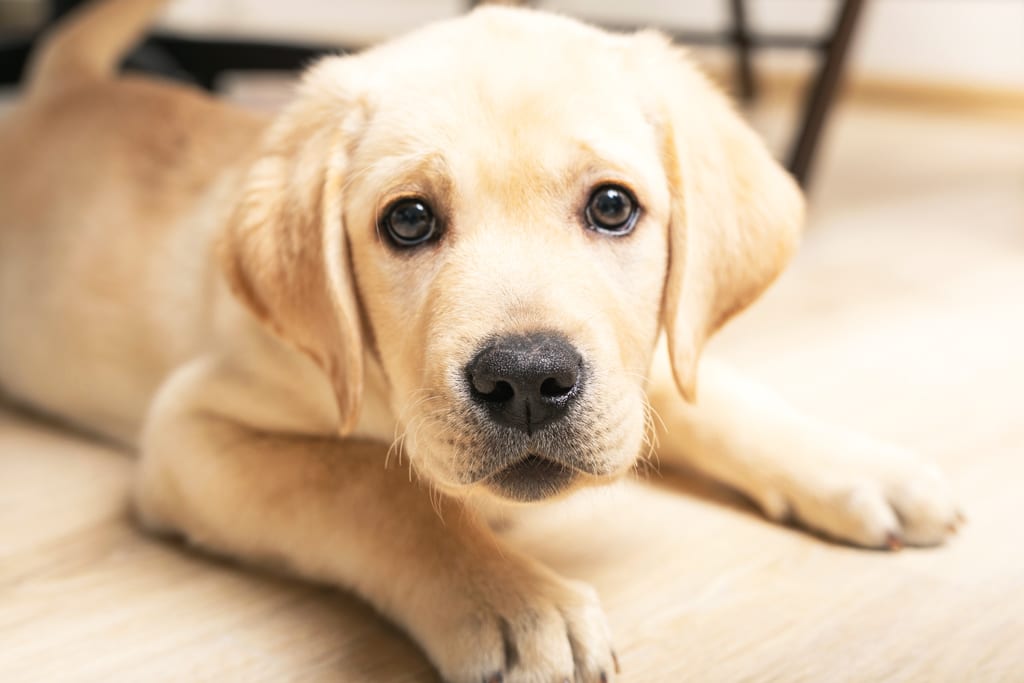
maksimenko.a.v/Bigstock
At eight weeks of age, a puppy can only hold it for a couple hours before needing a bathroom break. A general rule of thumb is that a puppy can hold their bladder one hour for every month of age. So if your puppy is two months old, they can hold it for about two hours. In short, you’ll either need to get up with your puppy during the night or set up a larger kennel/x-pen that allows for space to include a puppy pad
Don’t Rush Your Puppy’s Crate Training
Unfortunately, many people expect their puppy to stay in the crate without training, and this can backfire by making puppies feel stressed and dislike—or even hate—their crate. This can be a problem later on if you are one of the unfortunate few whose pup develops separation anxiety. Meghan D’Arcy, of Meghan D’Arcy Training and Behaviour in Toronto, ON, who is also a Certified Separation Anxiety Trainer, says that sometimes in separation anxiety cases people have to stop using a crate. “If a puppy has a strong aversion to the crate, separation anxiety may be at play,” she says. “Dogs with separation anxiety often can’t handle being crated and guardians have reported that their dogs have broken crate bars, cracked their teeth or caused their paws to bleed trying to escape it.” Fortunately this is rare, but taking time to introduce the crate properly will pay off later.
Is Crating Your Puppy Essential?
Crating your puppy overnight is a choice. Sometimes puppies who aren’t sleeping well in their crate will happily cuddle up with you at night. “If you’re desperate and considering this—or you just want to cuddle your puppy—go for it!” says Kathrine. But she has some advice: “You might want to prepare your bed with a waterproof cover and not use your best Anthropologie duvet, but there is nothing wrong or potentially harmful about letting your puppy sleep in bed with you.“
However, every accident is a set-back in toilet training, which is why most people prefer to wait until the puppy is properly house-trained before considering letting them sleep in the bed. And remember, some puppies may not want to sleep on the bed, especially as they get bigger—and that’s their choice.
Summary: What to do if Your Puppy Cries at Night in Their Crate
If your puppy cris at night, it likely means their needs aren’t being met, whether they need to go potty or need reassurance. Figure out what they need, and take it from there. And remember—the first few nights are the hardest; after that, it gets easier.
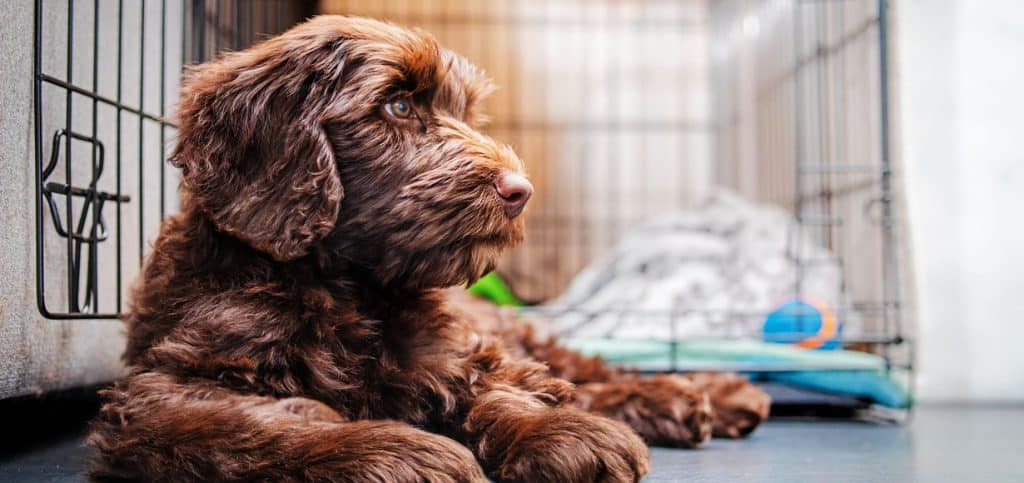
Petra Richli/Adobe Stock
Teach Puppy to Love the Crate: Here’s How
Puppies aren’t born loving crates: you have to teach them to love them. Follow a gradual training plan with lots of treats as reinforcement to build positive associations and teach your puppy to view their crate as a safe haven.
Suzanne Bryner of Lucky Fido Dog Training in Friday Harbor, WA, says “We want puppies to feel really happy, not just so-so, about their crate, so it’s important to take your puppy through crate training step by step and ensure that they are really happy at each step.”
First, make sure the crate is set up right.
It should be sized so they have room to stand up, stretch, and turn around, but not too big. If you’ve got a large crate to accommodate growth, use the divider to make it the right size. Then add some cozy bedding.
Let your puppy play and when they’re tired, put them in their crate and they should happily nap. When they wake up, immediately let them out (before they start to cry) and take them out to potty.
Meghan D’Arcy, of Meghan D’Arcy Training and Behaviour in Toronto, Ontario, says “Make the crate comfortable with both a bed and blanket, since puppies like to burrow and need to stay warm, and your puppy will be napping in there in no time.”
Follow a gradual training plan that starts by allowing the puppy to come and go from the crate as they please.
Use nice treats but make them small and be generous with them. Meghan says, “Begin by tossing some treats just inside the door and gradually toss further and further back. Throughout the day, sprinkle treats at the back of the crate for your puppy to discover.”
Make Your Puppy’s Crate Fun/Rewarding
In addition to following a crate training plan, feed your puppy’s meals in the crate to help build positive associations. If you like, you can feed the meal via a rubber chew toy to make it last longer. Meghan says, “Initially, remain nearby while your puppy is eating and let your puppy out of the crate as soon as they’re done. (Also remember most puppies will want to potty right after eating.) With comfort, you can increase the amount of time your puppy remains in the crate after they’re done eating, dropping a treat in the crate every 10-15 seconds, and begin moving around the room or stepping away briefly.”
And remember, puppies and dogs of all ages shouldn’t be left in a crate all day. The crate is a refuge, a nap spot, and, for pups, a housetraining aid. It is not an area your dog should generally be restricted to.
Join the newsletter and never miss out on dog content again!
"*" indicates required fields
By clicking the arrow, you agree to our web Terms of Use and Privacy & Cookie Policy. Easy unsubscribe links are provided in every email.


